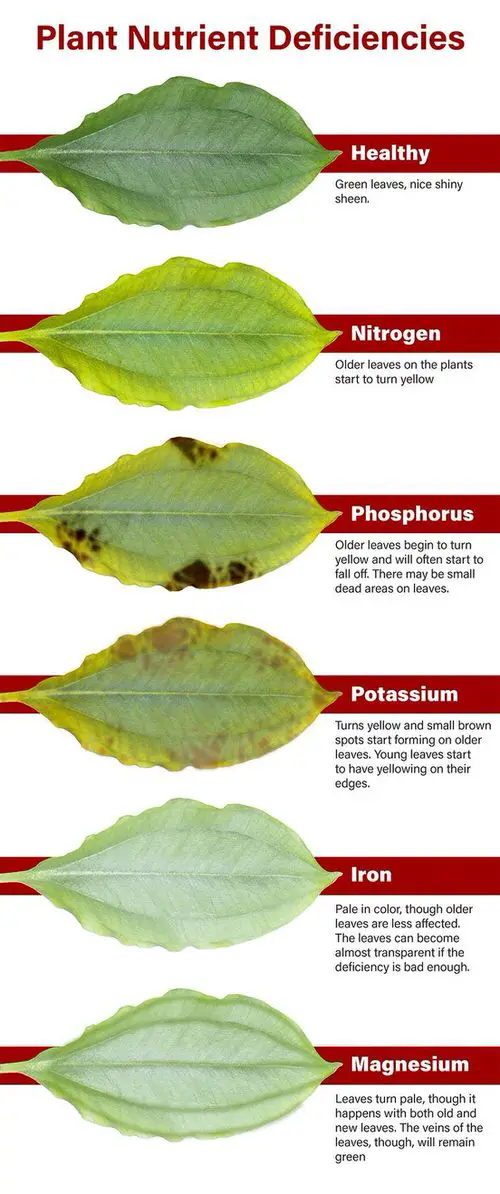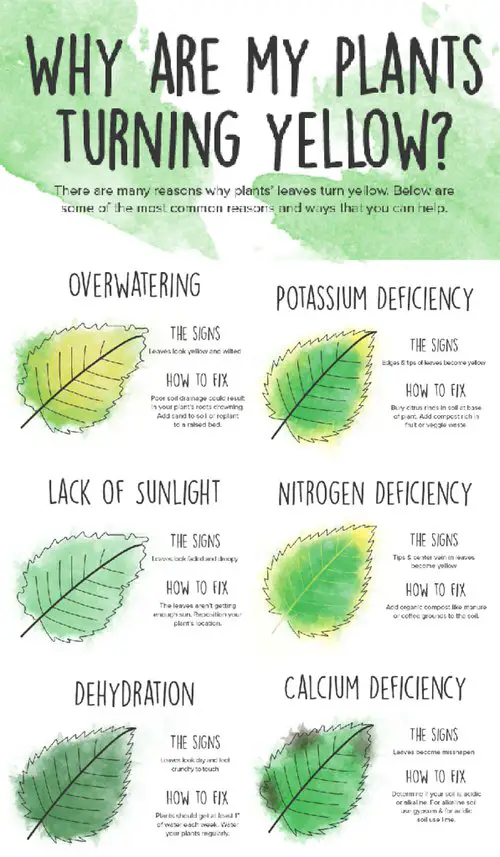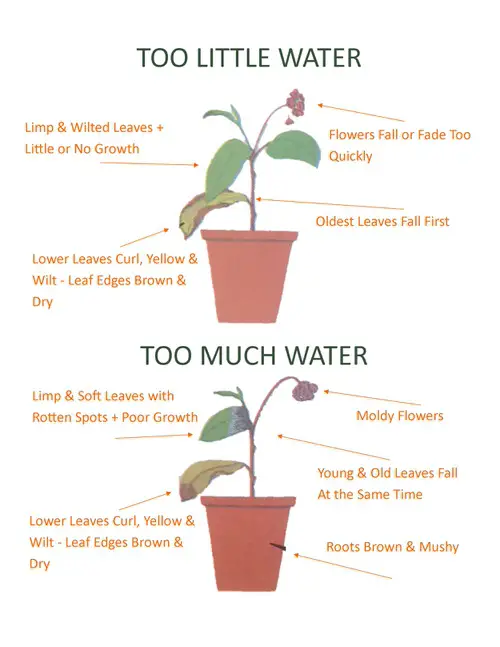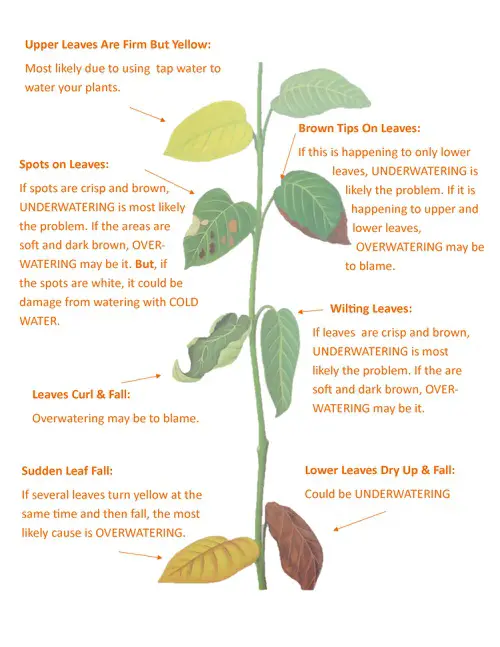Suffering from unhealthy plant growth? In this article, we have a detailed list of Plant Nutrient Deficiency in Pictures for you!
Plants need nutrients to germinate, grow, produce fruits, and bar off harmful pests, besides sunlight and water. But detecting the specific deficiency often gets challenging for gardeners. So, we have compiled a detailed note on Plant Nutrient Deficiency in Pictures to help you out!
Plant Nutrient Deficiency in Pictures

- Nitrogen: Plants deficient in nitrogen show stunted growth and a lack of the lush green color in the foliage due to decreased chlorophyll production.
- Phosphorus: Phosphorus boosts the green color in plants; deficiency turns them into dark and bluish-green colors.
- Potassium: The leaves turn yellow with curled up, burned tips around the veins. The symptoms are common in older leaves.
- Iron: Iron deficiency turns the leaves into a transparent mesh of veins. The greenish part turns yellow and gradually fades away in severe lack.
- Magnesium: Magnesium deficiency leads to leaf necrosis, with darkened veins and stunted growth. Older leaves drop off in such a condition.

- Boron: Boron deficiency reduces fertility in plant cells, inhibiting fruit production.
- Sulfur: Lack of sulfur leads to chlorosis — loss of chlorophyll that leads to yellowing the leaves and stunted plant growth.
- Manganese: Stunted growth and inter-veinal chlorosis on young leaves, sunken dark spots also add to the traits.
- Zinc: Leaves with zinc deficiency take a yellowish and bronze hue, common in younger leaves which then shed away.
- Copper: Leaf tips wilt away, and the foliage loses its shine besides turning yellowish-brown in color.
- Molybdenum: Nitrate build-up in the soil results in molybdenum deficiency in plants followed by pale leaves and interveinal chlorosis.

- Lack of Sunlight: The leaves lose their green pigment, taking a droopy appearance. In some cases, the stems outstretch towards the light source, resulting in leggy stems. Keep the plant in a well-lit location, depending on its sunlight requirement.
- Dehydration: The plant cells fail to photosynthesize in moisture lack. Leaves tend to shrink to retain the available water, which later gets shriveled and shed away. Do not let your plants dry out. Water at least once a week to aid their growth.
-

plantae_org -

shutterstock/kirpmun 
growediblewalls.com -

tumblr.com 

marinette.extension -

bloglovin


